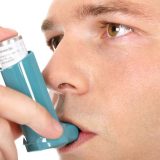

It’s that time of year again! We all love to get outside. Hiking, gardening and even sitting down to eat out on the patio is what is summer is all about. Unfortunately, we also need to be aware of the dangers of tick bites – especially in the northeast.
Lyme disease is an infection caused by Borrelia burgdorferi, a bacterium carried and spread by deer ticks. The bacterium travels throughout the blood stream, entering various body tissues and resulting in a variety of symptoms. This disease usually affects the joints, nervous system and can even damage the organs over time.
Symptoms of Lyme Disease
Symptoms include the well-known bulls-eye rash, joint pain, chills, fever, fatigue and later tingling or numbness in extremities, and possible facial paralysis. In advanced cases, severe headaches, painful arthritis and swelling of joints, and even cardiac problems may occur.
It is important to note, there is not always a rash, it is not always a bulls-eye and it may not be at the site of the bite. If there is a rash, it typically appears one to two weeks after the bite.
Symptoms of The Powassan Virus
Lyme isn’t the only tick-borne disease we can contract from ticks. The Powassan virus (POW) is also transmitted by ticks and has become active in New York’s Hudson Valley. There have been only a few cases reported in the last few years, but this virus causes severe neurological damage and can even be fatal. Signs and symptoms mimic Lyme disease at first: fever, headache, weakness and confusion, but can quickly become severe resulting in hospitalization for vomiting, respiratory problems, seizures and brain swelling.
Not only is the Powassan virus more virulent and quick acting than Lyme disease, transmission is also much faster, taking about 15 minutes once the tick has completed digging in. For this reason, it is vital that anyone outdoors in an area where ticks are active check themselves regularly. Avoiding the Powassan virus involves the same steps as avoiding Lyme disease: be vigilant about tick exposure!
Where Ticks Hide
Deer ticks like to hide in shady, moist ground cover such as high grass, shrubbery and leaf debris. While they like woodlands and wild habitat, they also live in yards and gardens. Ticks are concentrated near old stone walls, vines and rock outcrops as this is where their hosts tend to congregate. Deer, mice, squirrels and chipmunks tend to stay near this type of cover, and so ticks will be found in these areas in higher concentrations.
Ticks do not fly or jump, but can crawl onto a host from the grass, twigs and leaves. Once they make their way onto the host, they tend to crawl upwards until they find a creased, protected area and begin the process of digging in. For this reason, they are usually found in creases: behind knees, groin, elbows, underarms, under the breasts and in hair.
There is some good news: It generally takes 24 to 48 hours for the tick to dig in and begin transfer of the virus, so there is a window of opportunity to find and remove the tick before contracting Lyme disease. (Reminder: this window is much smaller in the case of Powassan virus.)
Ways to Avoid Tick-Borne Diseases
Since it is best to avoid tick-borne diseases rather than try to detect and treat them, here are some things you can do:
- Wear light colored clothing and closed-in shoes, making it easier to spot ticks.
- If possible, wear long pants tucked into socks to keep ticks off skin.
- Regularly check yourself, children and pets! This should include going through hair with a fine tooth comb to find hidden ticks. Remember to check throughout the day when outside and scan for ticks often.
- Keep lawns mowed and edges trimmed and free of leaf debris.
- Mow around the house and patio areas to cut down on ticks.
- Keep long hair tied up.
- Avoid sitting directly on the ground or on stone walls and outcrops.
- Stay on paths and trails when hiking.
- Stack woodpiles neatly in a dry location, off the ground if possible.
- Clear all leaf and twig debris from yard and patio areas.
- Some people have a licensed professional spray their lawns to keep tick populations under control, while others do not appreciate the chemicals on their lawns.
- Wear insect repellent! Traditionally, the recommendation is to wear an insect repellent that contains Deet or Permethrin, both of which are accompanied by serious warnings not to get them on your skin or in your eyes as they are poisonous to us, as well as the insects. Most people do not want to use these products on children and pets any more than on themselves!
Do You Know How to Remove a Tick?
To remove a tick, use a fine pair of tweezers to grab the head of the tick, right where it enters the skin and tug until free without twisting or jerking it. Do not grab the body of the tick; be sure to grab the head or mouth. Clean the area with a disinfectant after removal. Do not try to burn the tick out or use petroleum jelly as this may result in it digging in deeper. Keep the tick in a jar or plastic bag in case your physician wants it tested.
After removing a tick, monitor the area for a rash for up to 30 days, and be on the lookout for the other symptoms of Lyme disease. Consult your physician to be tested for Lyme disease.
Lyme disease and the Powassan virus cause a host of unpleasant, dangerous and even deadly symptoms, so avoidance is by far preferable to treatment. Constant awareness of ticks and their habitat preferences can help us avoid these chronic and painful diseases for ourselves, our children and our pets.




